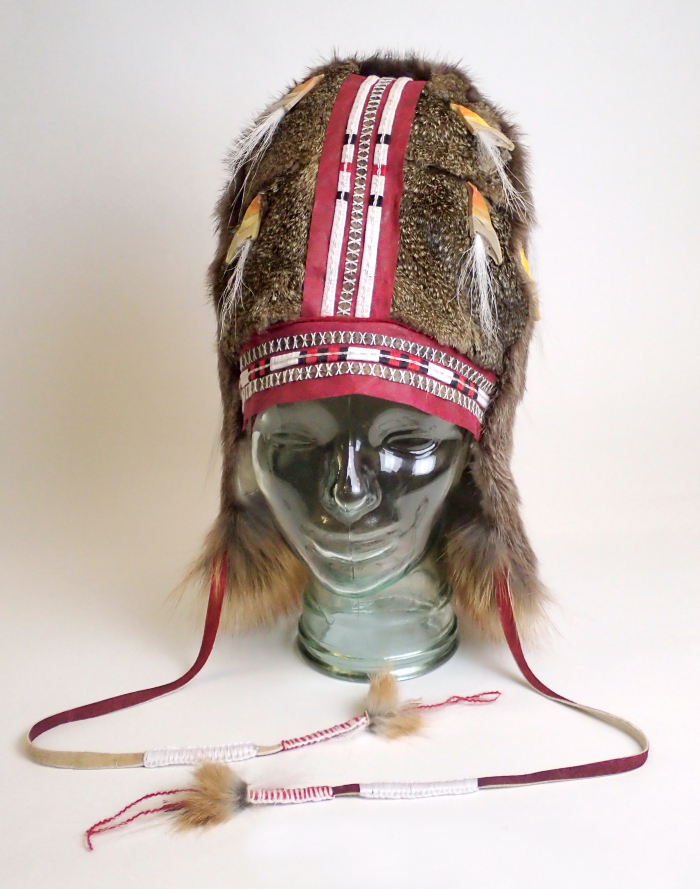Hat — Saapeq; Slaapaq
Cuumi taaten angutet slaapamek aturtaallriit.—Before, old men used to wear hats.

Photo: Festival fur hat, by Susan Malutin, purchased with support of Rasmuson Foundation, AM774
Collections of traditional Alutiiq clothing are filled with hats. Wide-rimmed woven hats of spruce root; hunting visors bent from a single piece of wood; tall, embroidered skin hats; closely fitting fur caps; wooden helmets carved in the shape of a seal head; and feathered and beaded headdresses were among the diverse styles of headgear worn for daily activities and ceremonies. Many of these hats have a unique Alutiiq term. For example, caguyaq is the word for a hunting visor, and awirnaq means a spruce root hat. Whatever the style, they can all be referred to by the term saapeq or slaapaq. Derived from Russian, this is the general word for hat, cap, or bonnet.
In the historic era, Alutiiq seamstresses began making caps in Western styles. They transformed traditional materials like sealskin and animal intestine, into tricorn hats and workers’ caps popular in Europe. Some of these pieces may have been commissioned by Russian sailors as souvenirs. Others likely represent Alutiiq people incorporating new designs into the rich array of existing hat styles. This was not a new process. Before making hats inspired by European styles, Alutiiq people adopted woven spruce roots hats from their Łingit neighbors. These hats were shaped like those of the Łingit, but they featured Alutiiq-style decorations—embellishments of beads and dentalium shells, and paintings of animals and their inner human-like spirits.
In the historic era, Alutiiq seamstresses began making caps in Western styles. They transformed traditional materials like sealskin and animal intestine, into tricorn hats and workers’ caps popular in Europe. Some of these pieces may have been commissioned by Russian sailors as souvenirs. Others likely represent Alutiiq people incorporating new designs into the rich array of existing hat styles. This was not a new process. Before making hats inspired by European styles, Alutiiq people adopted woven spruce roots hats from their Łingit neighbors. These hats were shaped like those of the Łingit, but they featured Alutiiq-style decorations—embellishments of beads and dentalium shells, and paintings of animals and their inner human-like spirits.
